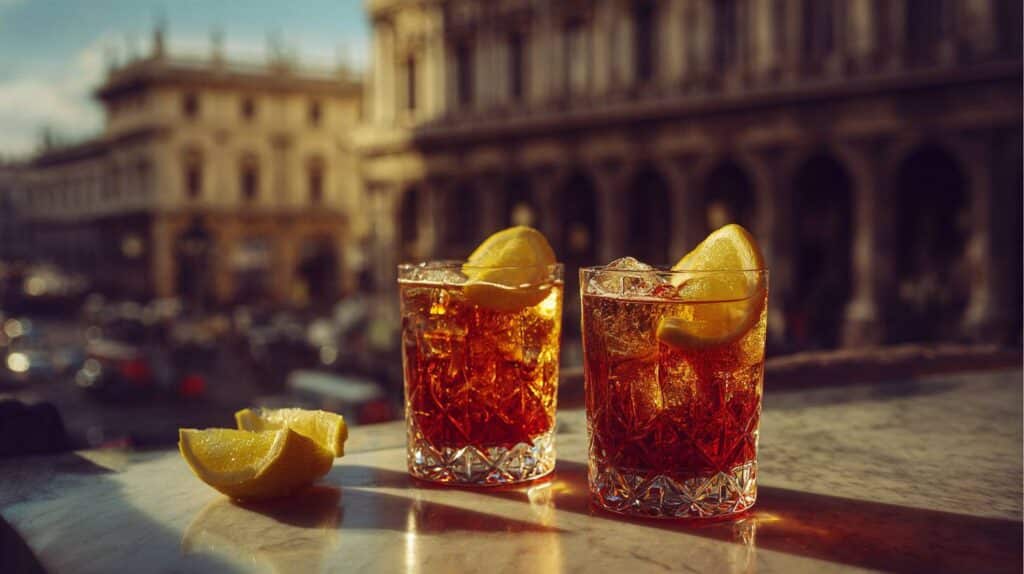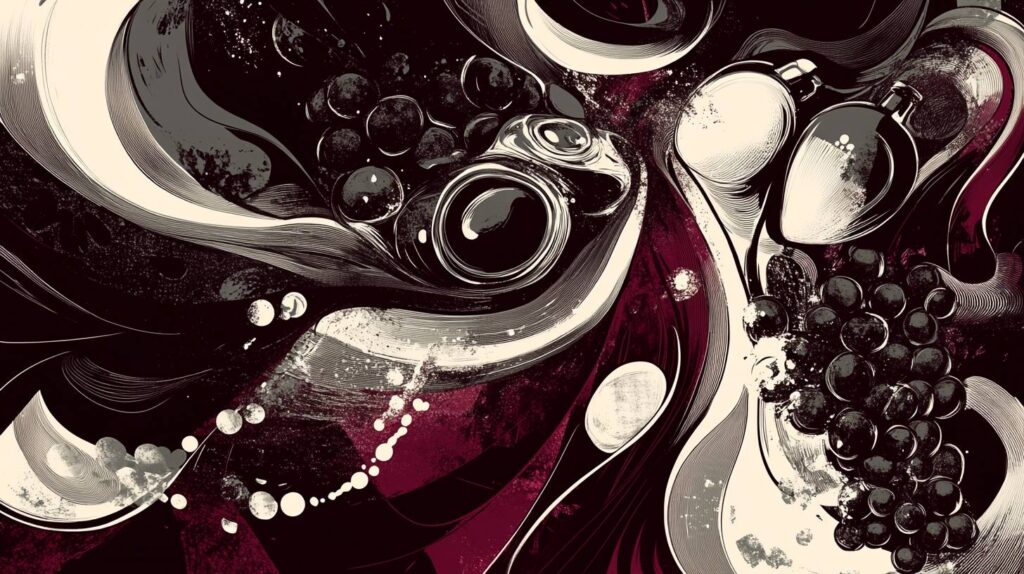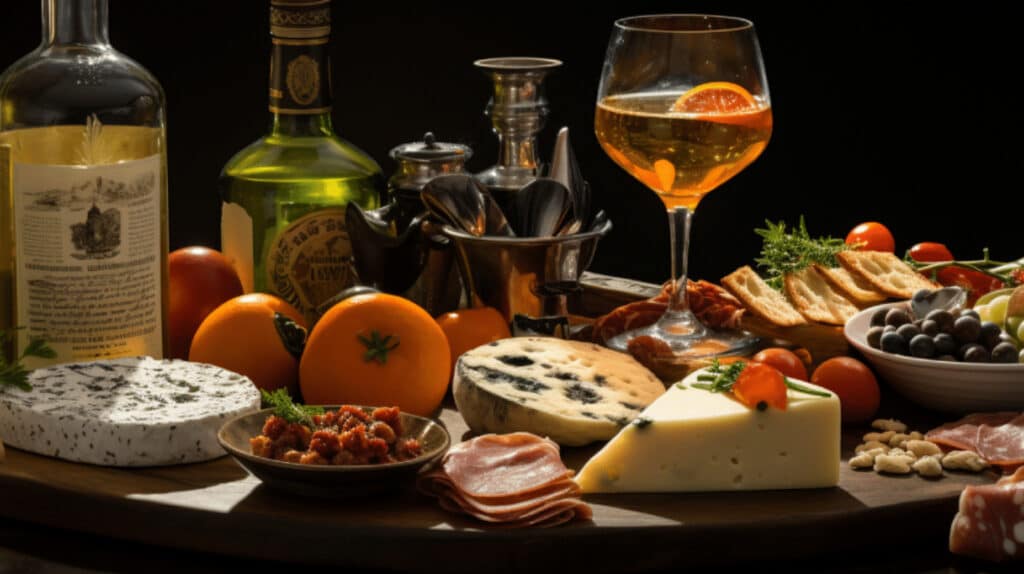Vermouth wine has been around for centuries, but it’s only recently that it’s making a comeback. Whether you’re a cocktail enthusiast or someone who enjoys a glass of wine, understanding the taste of vermouth wine can elevate your drinking experience. In this comprehensive guide, we’ll delve into the history, production, and flavor profiles of vermouth wine taste, helping you appreciate this fortified wine like never before.
What is Vermouth ?
Vermouth is a type of fortified wine that is flavored with various botanicals, including roots, barks, flowers, seeds, herbs, and spices. Originating in Europe, it has become a staple in many cocktails and is also enjoyed neat or on the rocks. There are primarily two types of vermouth: sweet and dry. Sweet vermouth, often red in color, is typically used in cocktails like the Manhattan and Negroni. Dry vermouth, usually clear or pale yellow, is a key ingredient in Martinis. The fortification process involves adding a neutral spirit, usually grape brandy, to increase the alcohol content and stabilize the wine. This allows for a longer shelf life and enhances the flavors of the botanicals.
A Brief History of Vermouth wine taste
Vermouth is a fortified wine that has its origins in ancient times, but it gained prominence in 18th-century Europe, particularly in France and Italy. The wine is aromatized with various botanicals like herbs, spices, and fruits. The taste of Vermouth can vary significantly depending on the botanicals used and the region where it’s produced.

In Italy, Vermouth was initially used for medicinal purposes, but it soon became a popular aperitif. Italian Vermouth is generally sweeter and has a robust flavor profile with notes of citrus and spices.
French Vermouth, on the other hand, is often drier and more subtle, with floral and herbal undertones. It became a staple in classic cocktails like the Martini and the Manhattan.
Over the years, the taste of Vermouth has evolved, with modern producers experimenting with a wide range of flavors and styles, from extra-dry to sweet and fruity. Today, Vermouth is enjoyed worldwide, both as a standalone drink and as a key ingredient in various cocktails.
What are the key differences between French and Italian Vermouth taste?
Flavor Profiles
- French Vermouth: Typically drier and lighter in flavor. It often has floral and herbal undertones, making it ideal for cocktails that require a less dominant Vermouth flavor.
- Italian Vermouth: Generally sweeter and more robust. The flavor profile is more complex, with notes of citrus, spices, and sometimes even caramel or vanilla.
Ingredients
- French Vermouth: Usually made with a white wine base and often includes fewer botanicals, resulting in a more subtle flavor.
- Italian Vermouth: Made with either a white or red wine base and tends to include a wider range of botanicals, such as cloves, cinnamon, and citrus peels, contributing to its richer taste.
Traditional Uses
- French Vermouth: Often used in cocktails like the Dry Martini, where a subtler Vermouth flavor is desired.
- Italian Vermouth: Commonly consumed as an aperitif and is also a key ingredient in cocktails like the Negroni and the Manhattan, which benefit from its bolder flavors.
Geographic Origin
- French Vermouth: Originated in France, with Noilly Prat being one of the most famous brands.
- Italian Vermouth: Originated in Italy, with brands like Martini & Rossi and Carpano being well-known.
Alcohol Content
- French Vermouth: Usually has a slightly lower alcohol content, ranging from 16% to 18%.
- Italian Vermouth: Generally has a higher alcohol content, often around 18% to 20%.
In summary, French and Italian Vermouths offer distinct experiences in terms of flavor, ingredients, and uses, making each unique in its own right.
Best Flavor Profile and Food Pairings of Vermouth
The flavor profile of Vermouth wine taste is as diverse as the botanicals that go into it, and this diversity makes it an incredibly versatile beverage for food pairings. Let’s break it down by the main styles of Vermouth and their ideal culinary companions.

Citrus and Dry Vermouth Wine Taste
These are the crisp, refreshing types that offer an extra herby edge. When served on the rocks, they pair exceptionally well with seafood, especially shellfish like oysters, crab, and prawns. If you’re into cooking, a dash of this Vermouth style can enhance dishes like seafood risotto or clams. It also pairs well with tricky-to-match ingredients like olives, anchovies, and artichokes, making it a great choice for antipasti, crostini, and Greek meze.
Fruity and Sweet Vermouth
Think of these as the richer wines, akin to a Chardonnay. This vermouth wine taste has a touch of sweetness but drier when diluted with ice and soda. These Vermouths are excellent with chicken salads that have a hint of fruit, and they’re amazing with burrata and peach salad. They also work well with milder Chinese dishes like seafood or chicken stir-fries.
Spicy and Aromatic Vermouth
These are closer to a red wine but with a bitter edge. They’re often used in cocktails like the Manhattan, Negroni, or Boulevardier, which are steak-friendly. In a tapas setting, they complement the smoky/spicy flavors of chorizo and jamon iberico. They also pair well with smoked and cured meats like smoked duck, salami, and smoked brisket.
Woody and Bitter Vermouth
This style has a pronounced note of bitterness and pairs well with coffee-flavored foods like chocolate-covered coffee beans and homemade tiramisu. They’re also brilliant with dark chocolate, especially those high in cocoa solids, and rich in dried fruits like panforte or even Christmas cake.
Relevant External Links:
- Matching Food and Wine – For more information on wine pairing.
- The Whisky Exchange’s Vermouth Styles – To learn more about different styles of Vermouth.
How to Drink Vermouth and get the Best From it
Vermouth is a versatile beverage that can be enjoyed in a variety of ways, from being a key ingredient in classic cocktails to standing alone as a sippable drink. Here are some popular methods to enjoy this fortified wine:
Straight Up
Vermouth can be a cocktail in itself. For instance, a glass of Punt e Mes, a legendary sweet vermouth, can be enjoyed over ice. Add an orange peel for an extra layer of aroma and flavor. This particular vermouth has a higher level of bitterness, making it ideal for sipping solo.
The Martini Equation
Contrary to popular belief, it’s not just the gin that makes a Martini; it’s also the amount of vermouth you prefer. Ratios can vary, from the Upside-Down or Reverse Martini, which uses a 1:5 gin to vermouth ratio, to the more traditional 2:1 gin to vermouth ratio.
Vermouth Styles
Vermouth comes in different styles, each with its own ideal use. Dry white vermouth, like Dolin, is crucial for Martinis. Sweet red vermouth is the anchor for Manhattans and Negronis, while sweet white vermouth offers a floral, ethereal experience.
Vermouth Bars
Yes, they exist! In Barcelona, you’ll find several vermuterías, bars devoted solely to vermouth. These establishments offer a range of vermouth styles, often served on the rocks or as part of innovative cocktails.
Creative Mixes
If you’re not a purist, you can also mix vermouth with soda or tonic water for a refreshing low-alcohol drink. Add a slice of lemon or a sprig of mint for a touch of freshness.
Storage Tips
How to Store Vermouth
Storing Vermouth properly is crucial for maintaining its flavor and aroma, especially since it’s not just a spirit but a fortified wine. Here’s how to ensure your Vermouth stays fresh for as long as possible:
Refrigeration is Key
Vermouth should always be stored in the fridge once opened. Cooler temperatures help prevent rapid spoilage and oxidation, ensuring that the Vermouth remains aromatic and flavorful for a longer period.
The 8-Week Rule
According to Fabio Raffaelli, a brand ambassador for Martini & Rossi, an opened bottle of Vermouth will stay fresh for about eight weeks when stored in the fridge. After this period, while it may still be good, it won’t be as fresh.
Label the Date
It’s a good practice to write the date on the back label when you open a new bottle of Vermouth. This way, you can keep track of its age and ensure that your cocktails remain top-notch.
Oxidation and Flavor
When Vermouth is left out at room temperature, it oxidizes quickly, turning to vinegar. This can ruin the flavor profile of any cocktail you make with it. So, if you have an opened bottle sitting out, move it to the fridge immediately.
Longevity Compared to Other Wines
Vermouth generally has a higher alcohol-by-volume (ABV) than other still wines, which means it will stay fresher longer in your fridge than typical wine but not indefinitely.
What Happens if You Don’t?
While you won’t get sick from drinking old Vermouth that’s been stored at room temperature, it will negatively affect the quality of your cocktails. So, it’s best to follow proper storage guidelines.







